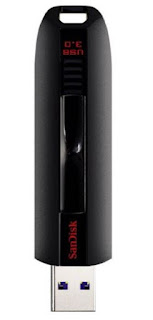If you are trying to boot to a Windows payload that is based on BartPE, Windows XP, 2003 or Vista, you may occasionally see this BSOD screen when booting to these types of payloads on some systems:
 |
| ACPI 0x000000A5 BSOD! |
Often the simple fix is to
press the F7 key repeatedly just as it starts to boot to PE. This F7 trick worked a treat when I tried to boot to PCUnlocker and Active Password Changer (via
MediCat and a large .imgPTN file) on my Lenovo IdeaPad 300 notebook!
In many cases, you will see a text message to press F6 - this is your cue to go crazy on the F7 key!
Gotcha!
Before you do this however, you need to check the BIOS settings to see if there is any 'special' setting for the Fn function keys if you have a notebook. For instance, on my Lenovo IdeaPad 300, there is a '
HotKey Mode' in the Configuration page of the BIOS Settings menu. If this setting is Enabled (which is the default!), then you have to press Fn+F7 in order for the keyboard to generate the F7 scan code.
Other incantations to try
If no end of hammering the F7 (or Fn+F7) key seems to work for you, here are some other things to try which has apparently worked for other people:
- Check the BIOS settings, set USB to USB 2.0.
- Set all BIOS OS compatible settings to Legacy and XP/Win7 and not Win8/10 or UEFI.
- Reset the BIOS settings to default and then try the above BIOS settings.
- If you have an LPT option in the BIOS for a parallel printer port, try it set to LPT=Enabled as well as ACPI & PnP=Enabled and APM=Disabled.
- Try disabling ACPI in the BIOS.
- Try changing any CPU options in the BIOS (Safe Execution, VxD, etc.).
- You can also try an older version of the BIOS (newer versions may have been made compatible for Win8/10 only).
- If you have ever added extra RAM to the system, restore the memory to it's original configuration and size (and test the memory with a memory test program - the problem may be due to bad or mismatched memory!).
P.S. MediCat can be used on E2B if you convert it to a FAT32 .imgPTN file. It does contain illegal copies of some software though, so make sure you hold licences for any software it contains!

















